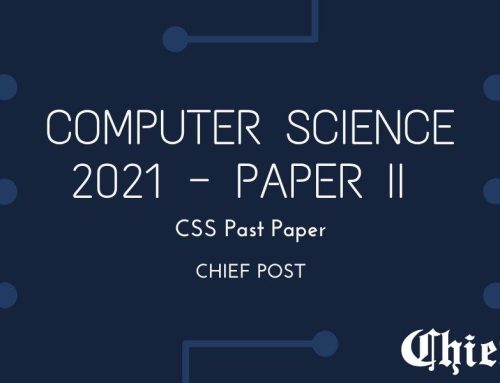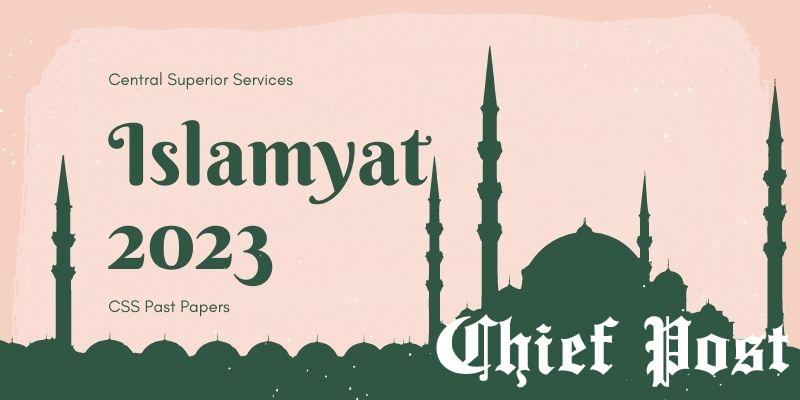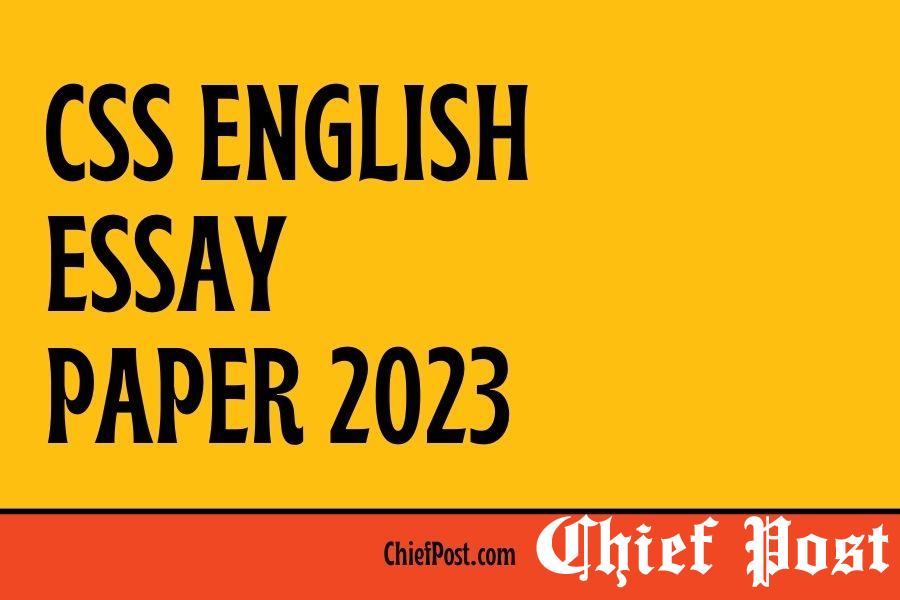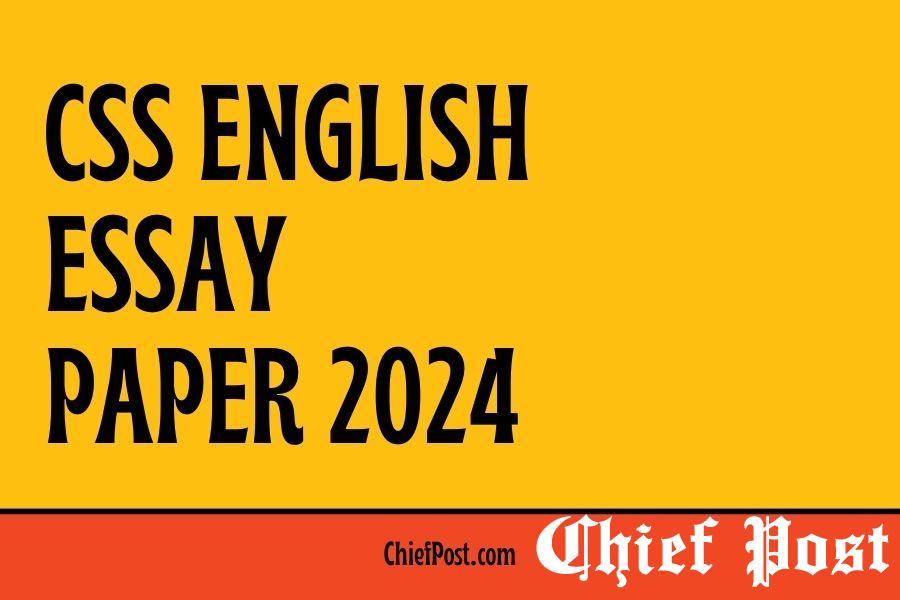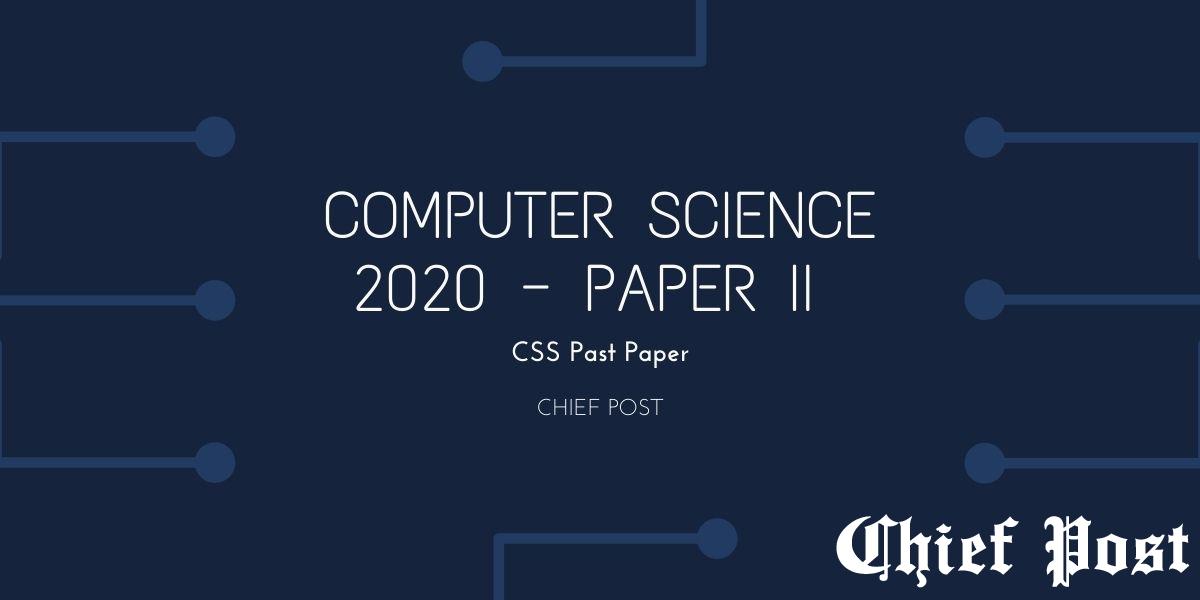
Computer Science 2020, Paper 2 — CSS Past Paper
NOTE: Paper one is published separately.
NOTE: You can download this paper, the links are given at the end of the page.
FEDERAL PUBLIC SERVICE COMMISSION
COMPETITIVE EXAMINATION-2020 FOR RECRUITMENT TO POSTS IN BS-17 UNDER THE FEDERAL GOVERNMENT
COMPUTER SCIENCE, PAPER-II
TIME ALLOWED:
- THREE HOURS
- PART-I (MCQS): MAXIMUM 30 MINUTES
- PART-I (MCQS) MAXIMUM MARKS = 20
- PART-II MAXIMUM MARKS = 80
NOTE:
- (i) Part-II is to be attempted on the separate Answer Book.
- (ii) Attempt ONLY FOUR questions from PART-II, by selecting TWO questions from EACH SECTION. ALL questions carry EQUAL marks.
- (iii) All the parts (if any) of each Question must be attempted at one place instead of at different places.
- (iv) Write Q. No. in the Answer Book in accordance with Q. No. in the Q.Paper.
- (v) No Page/Space be left blank between the answers. All the blank pages of Answer Book must be crossed.
- (vi) Extra attempt of any question or any part of the question will not be considered.
PART – II
SECTION – A
Q. No.2. (a) Explain Moore’s law. List high computing requirements in contemporary computing. (b) List and briefly define two approaches to dealing with multiple interrupts. (c) What is instruction-level parallelism? What are some typical distinguishing characteristics of RISC organization? (7) (6) (7) Q. No.3. (a) What is the kernel of an operating system? Explain the difference between a monolithic and microkernel. (b) What is the difference between simple and virtual memory paging? Also explain the purpose of translation lookaside buffer. (c) Why do we have deadlock in the multiprocessing environment? Explain different techniques for dealing with deadlocks. (7) (6) (7) Q. No.4. (a) Compare IPv4 and IPv6 headers. Explain the use of NAT technology to overcome IPv4 scarcity. (b) Find the maximum number of valid subnets and usable hosts per subnet that you can get from the network 172.23.0.0/23. (c) List and briefly define any THREE file organization techniques. Also explain basic Linux file system security. (8) (6) (6) Q. No.5. (a) What is signal encoding? Explain different encoding techniques used in data communication. (b) Explain the functions and needs of ARP and RARP protocols in computer networks. (c) Explain multiplexing and demultiplexing at the transport layer. Explain in the context of TCP/IP protocol. (8) (5) (7)
SECTION – B
Q. No.6. (a) What is the purpose of a join in SQL? Explain inner, left, right and full join with the help of examples. (b) Construct an E-R diagram for a hospital with a set of patients and a set of medical doctors. Associate with each patient a log of the various tests and examinations conducted. (c) Explain Two-phase locking (2PL) as a concurrency control mechanism in the database systems. (8) (7) (5) Q. No.7. (a) What is Histogram equalization? Explain the process and discuss its uses. (b) Explain types of color models. Also discuss the most common hardware oriented color models in detail. (c) What is translation and scaling? Find the number of bits required to store a 256×256 image with 32 gray levels. (6) (8) (6) Q. No.8. (a) “Web engineering is more challenging than traditional software engineering”. Argue for or against. (b) Briefly discuss the role of validation and verification in requirement engineering. (c) Explain functional and non-functional requirements in the context of a web application development. (7) (6) (7)
**********
You can Download this Paper from Google Drive or Dropbox.
Download from Google Drive: Click Here
Download from Dropbox: Click Here

